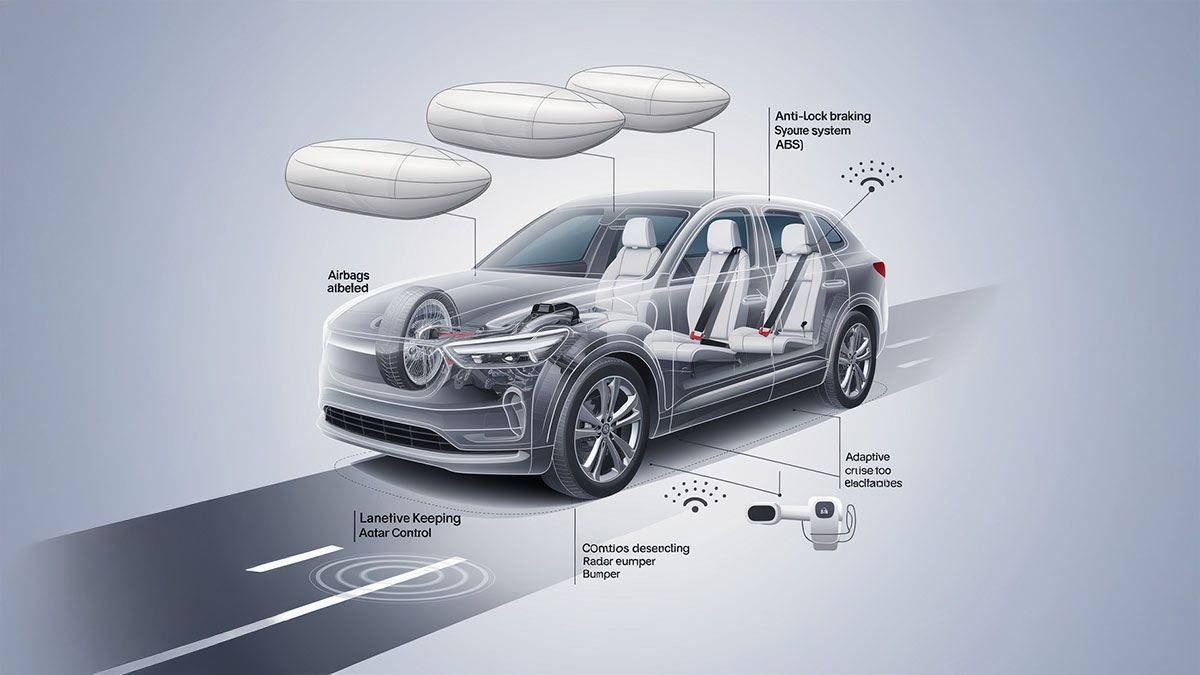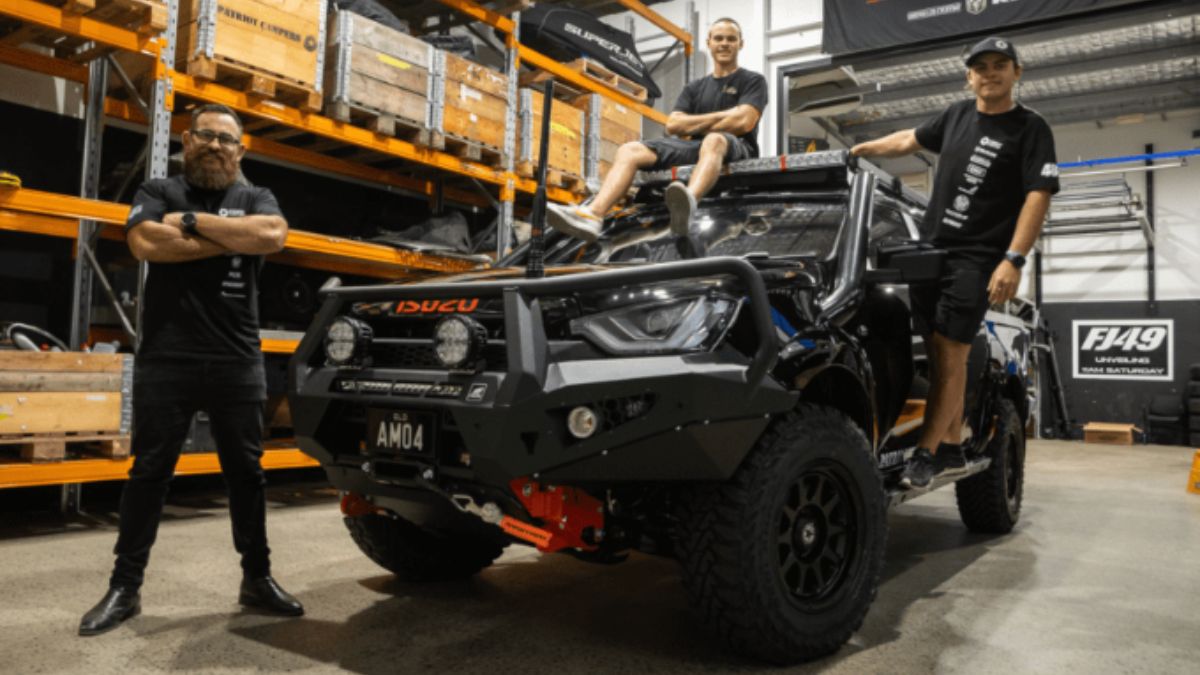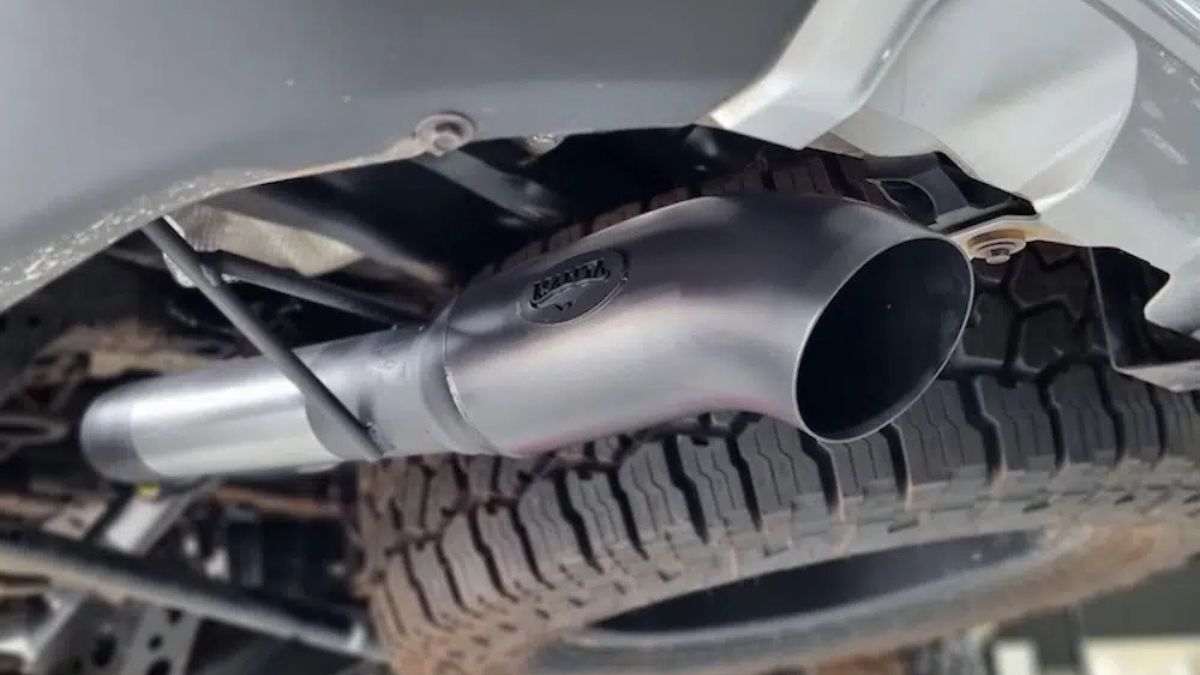AUTOMOTIVE
How Vehicle Size and Safety Features Protect You in a Crash

How often have your driving instructors told you to consider all the safety features before buying a vehicle? Driving schools even have basic vehicle control lessons to introduce new drivers to all the features of the car they’re learning to drive. In this era, road safety is not just a goal, it’s a necessity. Choosing a vehicle with the right safety features can go a long way in ensuring personal and road safety. Vehicles today come with many new technologies like advanced driver assistance or collision avoidance. These vehicles are designed not only to help prevent accidents but also to reduce the impact and injuries when they occur. In this post, we will explore why vehicle size and structure matter in accidents and how some safety features can help protect you in risky situations. Whether you’re a new driver searching for a suitable vehicle or a seasoned driver looking to upgrade, having this knowledge can help you make informed decisions.
How Vehicle Size and Structure Matter
The size and structure of a vehicle make a big difference in the result of a crash. They affect the nature and severity of injuries as well as the damage to the car. Large vehicles can absorb heavy impact forces and avoid severe damage during accidents. Heavy vehicles also have the weight to help them absorb the high force of a crash without retaining much damage. The structure of a vehicle also plays a big role in offering protection to its occupants. Large cars are often specially designed to protect the cabin. Most vehicles with longer fronts have additional crumple zones to absorb the impact of the collision and prevent injury to the passengers. Understanding the effect of vehicle size and weight can help you choose better vehicles more suited to ensure safety for you and others on the road.
Vehicle Safety Features That Help
One of the first driving lessons for new drivers in most driving school is an introduction to the main features, especially safety features, of the vehicle they’re learning to drive. Here are some of the common safety features in modern vehicles that enhance driver safety and help keep the roads safe too:
Airbags: The Soft Life-Savers
All modern vehicles have airbags, the first and most fundamental defence or protection in a crash. When a car collides with anything, the airbags blow up in front and sides of the passengers. They are like huge cushions that absorb the crash impact while protecting the passengers from hitting hard surfaces.
Anti-lock Braking System (ABS)
Most vehicles today also have a special feature called Anti-lock braking. In case of emergency braking, drivers can lose control of their vehicles and cause them to skid across the road, especially if the surface is wet or slippery. In such cases, an Anti-lock braking system stops the wheels from locking up and helps the driver retain control of the car.
Electronic Stability Control (ESC)
An advantage of having modern technology is the latest innovations like the Electronic Stability Control (ECS). As the name suggests, it helps provide stability and vehicle control and prevents accidents. It helps detect when any of the car’s tyres are losing traction and applies brakes to those individual tyres. This can stabilize the tyres and prevent skidding, thus preventing accidents and reducing risk to road safety.
Crumple Zones
Crumple zones are designed to protect passengers in a crash. They are often placed at the front and rear of the vehicle to absorb the energy of the impact and prevent it from reaching the passengers. They bear the maximum brunt of the collision, so the force that passengers feel is greatly reduced. Crumple zones protect passengers from major damage in a crash and thus ensure safety.
Seat Belts
The most basic yet safest feature of any vehicle is the seatbelt. They are used to keep the passengers secured to their seats in case of a collision. The impact of a crash can propel the passengers from their seats with force. Without a seatbelt, they can be thrown out of the front mirror or collide with car controls dispensing on the force of the crash. Seat belts can help keep the passengers in their seats and prevent any serious injury or damage.
Advanced Driver Assistance Systems (ADAS)
ADAS features detect hazards and take preventive actions, reducing the likelihood of a crash. Advanced driver assistance systems (ADAS) are one of the best and most advanced safety features available in vehicles these days. Driver assistance systems can help drivers with steering and acceleration, provide warning when necessary, and offer adaptive features like cruise control to make driving easier and safer for drivers.
Ensuring Safety on the Road
The vehicle size and advanced safety features play a crucial role in protecting you during a crash. Larger vehicles often provide more physical protection due to their weight and structure. Similarly, advanced safety technologies such as airbags, anti-lock braking systems, and collision avoidance systems add an extra layer of security. However, safety is not just about the vehicle; it’s also about responsible driving and regular vehicle maintenance. By combining thoughtful vehicle selection with safe driving practices, you can significantly enhance your chances of avoiding accidents and staying protected on the road. You can learn to drive safely by joining the Safer Drivers course from a local driving school. Remember, ensuring road safety is the responsibility of all road users!
AUTOMOTIVE
Drive Further, Sound Better: How the Torqit Exhaust Works on Australian Roads

For many Australians who love to drive, the journey is just as essential as the destination. It doesn’t matter if you’re hauling a caravan, exploring the bush, or going for a run along the coast; performance and dependability are important. The Torqit exhaust is what you need. It gives you more power, greater sound, and is engineered to last in Australian weather.
Not Just Noise
It’s not about making your 4WD noisier when you upgrade your exhaust; it’s about unlocking performance. The Torqit exhaust system is made to enhance airflow, which makes it easier for your engine to breathe and operate better. That implies more torque, smoother acceleration, and a big difference while hauling or going up steep hills.
Many drivers also say that their gas mileage gets better after the change. Your engine uses less gas to do the same task when it doesn’t have to work as hard. That means more kilometres from each tank and less stress for your car over time.
And then there’s the noise. You know your car is performing at its best when you hear that deep, polished note. It’s not too much; it’s just a confident growl that sounds good on any well-tuned 4WD.
Made to Work Well in a Tough Australian Climate
Anyone who has ever driven off-road knows that Australia can be tough. A vehicle gets worn down by heat, dust, salinity, and rough ground. The Torqit exhaust is made to withstand that, with stainless steel parts that are made for severe conditions where dependability is key.
Even after years of usage, the materials used to make each system are high quality and won’t rust or crack. They are also straightforward to put together because they come with precise fittings that fit a lot of common 4WD vehicles.
A Must-Have for People Who Love Road Trips
Australians love to embark on road trips, whether they are short getaways or long trips across the country. The appropriate setup can make the difference between a smooth trip and one that is full of problems.
The Torqit exhaust not only makes your car run better, but it also makes you feel good about how well it can handle anything that comes along on the road. The difference is clear, whether you’re towing the camper or driving up and down twisty mountain roads.
This kind of improvement goes well with travel ideas like RV Patrick’s tips for your next road trip, which say that being ready and having the right gear makes the trip go more smoothly.
Performance and Peace of Mind Go Hand in Hand
We create and test every system in Australia to make sure it works well in that country. Torqit systems work where other systems might not, whether you’re driving through the heat of the desert, the humidity of the coast, or the mud of the bush.
When you add in a promise of high-quality manufacture and local customer service, it’s simple to see why so many Australian 4WD fans trust Torqit.
How to Drive the Right Way
No matter how amazing your setup is, you should always drive safely first. Knowing the rules of the road in Australia helps keep everyone safe, especially when driving long distances. When you’re driving a lot of kilometres, things like speed limits, how to deal with fatigue, and how to pass other cars are just as crucial as how well your car works.
What Makes Torqit Different
Torqit gives you what you need most: power, sound, and durability. Whether you’re looking for adventure in the outback or just want your daily commute to feel a bit more polished, Torqit has you covered.
AUTOMOTIVE
Top 5 Benefits of Stabilitrak for Everyday Drivers

Imagine gliding down the highway, confident and in control, even when the weather turns unpredictable. This is not just a dream; it’s the reality for many everyday drivers thanks to Stabilitrak. This cutting-edge technology has revolutionized driving safety and performance, making our roads safer one journey at a time. Whether you’re navigating through rain-soaked streets or taking sharp corners with ease, understanding how Stabilitrak works can transform your driving experience. Let’s delve into the top five benefits of this remarkable system that every driver should know about!
What is Stabilitrak and How Does It Work?
Stabilitrak is a sophisticated electronic stability control system designed to enhance vehicle safety and handling. Developed by General Motors, it works by monitoring the driver’s steering input and comparing it to the vehicle’s actual motion.
When Stabilitrak detects a loss of traction or an imminent skid, it automatically applies brakes to individual wheels. This corrective action helps steer the car back onto its intended path, preventing potential accidents.
The system uses various sensors that track wheel speed, lateral acceleration, and yaw rates. By analyzing this data in real time, it can make split-second adjustments that keep drivers safe during challenging conditions.
In essence, Stabilitrak acts as an invisible co-pilot. It ensures you stay on course when faced with slippery roads or sharp turns—giving you peace of mind every time you hit the road.
Increased Safety on the Road
Stabilitrak significantly enhances safety for everyday drivers. It continuously monitors your vehicle’s movement and adjusts accordingly, ensuring that you stay on track.
When a sudden turn or slippery surface challenges control, Stabilitrak kicks in. It uses advanced sensors to detect loss of traction and helps correct it by applying brakes to individual wheels. This means fewer skids and spins, especially in adverse weather conditions.
The technology is particularly beneficial during unexpected scenarios like sharp turns or quick lane changes. With Stabilitrak engaged, even novice drivers can feel more confident behind the wheel.
Accidents often occur due to oversteering or understeering; however, this system reduces those risks effectively. Knowing that your vehicle has an extra layer of protection allows you to focus more on the road ahead rather than worrying about potential hazards.
Improved Handling and Control
Stabilitrak significantly enhances handling and control in various driving scenarios. This system continuously monitors vehicle dynamics, adjusting power distribution as needed.
When cornering or navigating tricky roads, Stabilitrak helps maintain your intended path. It reduces the chances of skidding or losing grip on slippery surfaces.
The real-time adjustments provide a sense of confidence for drivers. You can tackle sharp turns with more assurance, knowing your vehicle is working to keep you safe.
This technology also supports smoother acceleration during merging or passing maneuvers. Drivers experience less wheel slip and improved responsiveness when they need it most.
Whether you’re commuting through city streets or cruising along winding country roads, Stabilitrak ensures that every turn feels stable and secure. Embracing this feature might just transform how you approach your daily drives.
Enhanced Traction in Different Driving Conditions
Stabilitrak significantly improves traction, especially in challenging driving conditions. Whether you’re navigating through rain-soaked streets or tackling winter’s icy patches, this system is a game changer.
It works by monitoring your vehicle’s movement and adjusting power distribution as needed. If it detects any loss of grip, Stabilitrak kicks in to help maintain stability and control.
This feature provides confidence when cornering or during sudden maneuvers. Drivers can feel more secure knowing their vehicle is equipped to handle unexpected changes on the road.
Additionally, Stabilitrak aids those who drive on unpaved surfaces. It helps optimize tire performance, allowing for better grip on loose gravel or dirt roads.
With enhanced traction from this technology, everyday drivers can navigate various terrains with ease. It’s all about making every journey safer and smoother.
Better Fuel Efficiency
One of the often-overlooked benefits of Stabilitrak is its impact on fuel efficiency. By enhancing vehicle stability, it allows drivers to maintain optimal control without overexerting the engine.
When you navigate sharp turns or uneven terrain, your car’s systems work in harmony. This reduces unnecessary acceleration and braking, which can waste fuel.
With Stabilitrak actively managing traction and handling, you may notice improved performance during everyday driving conditions. The system fine-tunes how power is distributed across wheels based on road conditions.
In essence, a smoothly operating vehicle consumes less energy. This translates into better mileage for daily commutes or long road trips alike.
By investing in a vehicle equipped with Stabilitrak technology, you’re not just improving safety; you’re also making strides toward more economical driving habits that benefit your wallet and the environment.
Cost Savings on Repairs and Maintenance
Stabilitrak technology can lead to significant cost savings for everyday drivers. By enhancing vehicle stability and control, it helps prevent accidents that could result in costly repairs.
When your car maintains better traction and handling, the chances of wear on critical components decrease. This means fewer trips to the mechanic for issues related to alignment or suspension, which can be expensive over time.
Moreover, Stabilitrak can extend the lifespan of tires by reducing uneven wear caused by skidding or loss of traction. Investing in this system not only protects you while driving but also ensures that maintenance costs remain manageable.
With fewer repairs needed due to accident-related damages, you save both money and stress. Taking care of your vehicle becomes simpler when advanced technology like Stabilitrak is involved.
Conclusion
Stabilitrak is more than just a feature; it’s an essential safety tool for everyday drivers. By improving vehicle control and handling, it helps you navigate challenging conditions with ease. The enhanced traction it provides can make a significant difference in wet or icy weather, reducing the chances of skidding or losing control.
Moreover, Stabilitrak contributes to better fuel efficiency by optimizing power distribution during various driving scenarios. This not only saves you money at the pump but also minimizes wear and tear on your vehicle. With its ability to help prevent accidents, this system may lead to substantial savings on repairs and maintenance over time.
For anyone looking to boost their driving experience while ensuring safety and cost-effectiveness, investing in a vehicle equipped with Stabilitrak is wise. Embrace these benefits today for a smoother ride tomorrow.
AUTOMOTIVE
Top 5 Benefits of Upgrading Your Escapamento RD System

Introduction to Escapamento RD Systems
Are you ready to take your vehicle’s performance to the next level? If you’re passionate about enhancing your ride, then upgrading your escapamento RD system might be just what you need. This often-overlooked component can transform not only how your car sounds but also how it performs on the road. Whether you’re a casual driver or an automotive enthusiast, understanding the benefits of investing in a quality escapamento RD system is crucial. Let’s dive into why this upgrade could be one of the best decisions for your vehicle and driving experience!
Improved Engine Performance and Power
Upgrading your escapamento RD system can significantly enhance engine performance. A well-designed exhaust system optimizes airflow, allowing the engine to breathe more freely.
With improved airflow comes increased power. Your vehicle can achieve better acceleration and responsiveness as exhaust gases exit more efficiently. This boost in performance transforms your driving experience, making every ride feel exhilarating.
Additionally, a new escapamento RD can reduce backpressure. Lower backpressure means less strain on the engine components, leading to smoother operation and potentially extending the life of your vehicle’s internals.
The result is not just about speed; it’s about efficiency too. An upgraded exhaust allows for better combustion processes, which translates directly into enhanced overall performance metrics you’ll notice immediately behind the wheel.
Enhanced Fuel Efficiency and Cost Savings
Upgrading your escapamento RD can lead to significant improvements in fuel efficiency. A well-designed exhaust system optimizes the way exhaust gases exit the engine, allowing it to breathe better. This enhanced airflow means that your vehicle runs more smoothly, requiring less fuel for the same performance.
As a result, drivers often notice an increase in miles per gallon after making this upgrade. Over time, these savings add up, reducing overall fuel expenses significantly.
Moreover, with less strain on the engine due to improved exhaust flow, you’re likely to experience fewer maintenance issues related to fuel consumption. Regular trips to the gas station become less frequent and more manageable.
Investing in an escarpamento RD isn’t just about boosting power; it’s also a smart move towards cutting costs at the pump while maximizing every drop of fuel you use.
Increased Durability and Longevity of Your Vehicle
Upgrading your escapamento RD system significantly boosts the durability of your vehicle. High-quality materials in these systems resist corrosion and wear better than standard components.
When you invest in a robust exhaust system, you’re essentially prolonging the life of various engine parts. Better airflow reduces strain on the engine, decreasing overall wear over time.
Additionally, an upgraded system can handle higher temperatures more effectively. This capability minimizes stress on gaskets and seals, which often fail under extreme conditions.
Regular maintenance becomes simpler too. With fewer issues arising from outdated or inferior systems, you’ll spend less time in the shop and more time enjoying your ride.
A durable escapamento RD not only enhances performance but also safeguards your investment for years to come.
Reduced Environmental Impact
Upgrading your escapamento RD system can lead to a significant reduction in harmful emissions. These systems are designed with advanced technology that promotes cleaner exhaust flow.
By optimizing the way gases exit your vehicle, fewer pollutants are released into the atmosphere. This not only benefits air quality but also meets stricter environmental regulations.
Moreover, an efficient escapamento RD system ensures better combustion of fuel. As a result, less unburnt fuel escapes during operation, further decreasing your carbon footprint.
Drivers who prioritize eco-friendly choices will find this upgrade particularly appealing. It combines performance enhancements with environmental responsibility seamlessly.
Choosing a high-quality escapamento RD contributes to sustainable driving practices without sacrificing power or efficiency. Embracing these advancements is a step toward greener roads for everyone.
Cost-Effective Upgrades
When it comes to enhancing your vehicle, cost-effective upgrades are a top priority for many car enthusiasts. Upgrading your escapamento RD system is one of the smartest choices you can make.
First, consider the affordability. Compared to more extensive modifications like engine overhauls, installing a new exhaust system often requires less investment while delivering noticeable results.
This upgrade not only improves performance but also adds value to your vehicle. A well-maintained and upgraded exhaust system attracts potential buyers when it’s time to sell or trade-in.
Additionally, enhanced fuel efficiency means savings at the pump. The better airflow from an optimized escapamento RD translates into improved mileage over time.
Investing in quality components now can lead to fewer repairs down the line. Focusing on durable materials ensures that you won’t be spending money on replacements anytime soon.
Conclusion: Why Upgrading Your Escapamento RD System is Worthwhile
Upgrading your escapamento RD system offers numerous advantages that can enhance both your driving experience and the performance of your vehicle. Improved engine performance means more power under the hood, giving you a spirited ride whenever you hit the road. With better fuel efficiency, you’ll find yourself spending less on gas, which adds up to significant savings over time.
The durability of an upgraded system ensures it withstands wear and tear longer than factory options. This translates into fewer repairs or replacements in the long run—definitely something every car owner appreciates. Moreover, choosing a high-quality exhaust system can contribute positively to our environment by reducing harmful emissions.
Cost-effective upgrades are within reach when considering all these benefits. An investment in an escapamento RD is not just about immediate gratification; it’s about enhancing your vehicle’s overall value and performance for years to come.
If you’re looking for ways to elevate your driving experience while being mindful of costs and environmental impact, upgrading your escapamento RD system seems like a smart choice worth exploring further.
-

 TECHNOLOGY5 months ago
TECHNOLOGY5 months agoTop 10 Must-Read Stories from Kristen Archives You Can’t Miss
-

 TECHNOLOGY10 months ago
TECHNOLOGY10 months agoSky Bri Net Worth Revealed: How She Built Her Financial Empire
-

 TOPIC12 months ago
TOPIC12 months agoBasement Renovation Contractors: How They Tackle Structural Issues During Renovations
-

 TOPIC7 months ago
TOPIC7 months ago5 Reasons the //Vital-Mag.Net Blog Dominates Lifestyle
-

 TOPIC5 months ago
TOPIC5 months agoTop 10 Articles from the ://Vital-Mag.net Blog That You Can’t Miss
-

 CRYPTO9 months ago
CRYPTO9 months agoCrypto30x.com Review: Is It the Right Platform for You?
-

 BUSINESS5 months ago
BUSINESS5 months agoTraceLoans Explained What You Need to Know
-

 ENTERTAINMENT2 months ago
ENTERTAINMENT2 months agoNHentai.NEF: Navigating the Popular Hentai Archive with Ease
